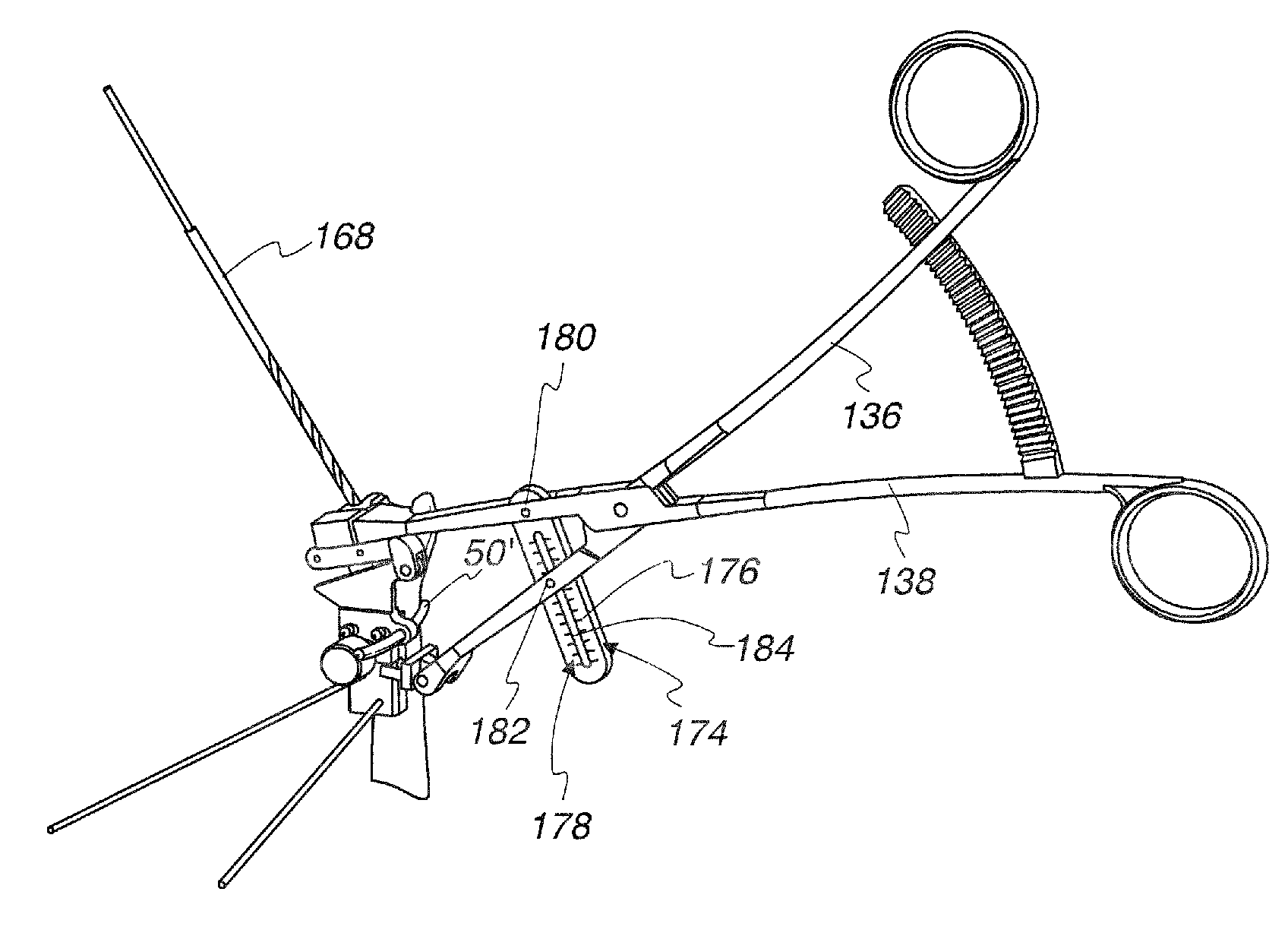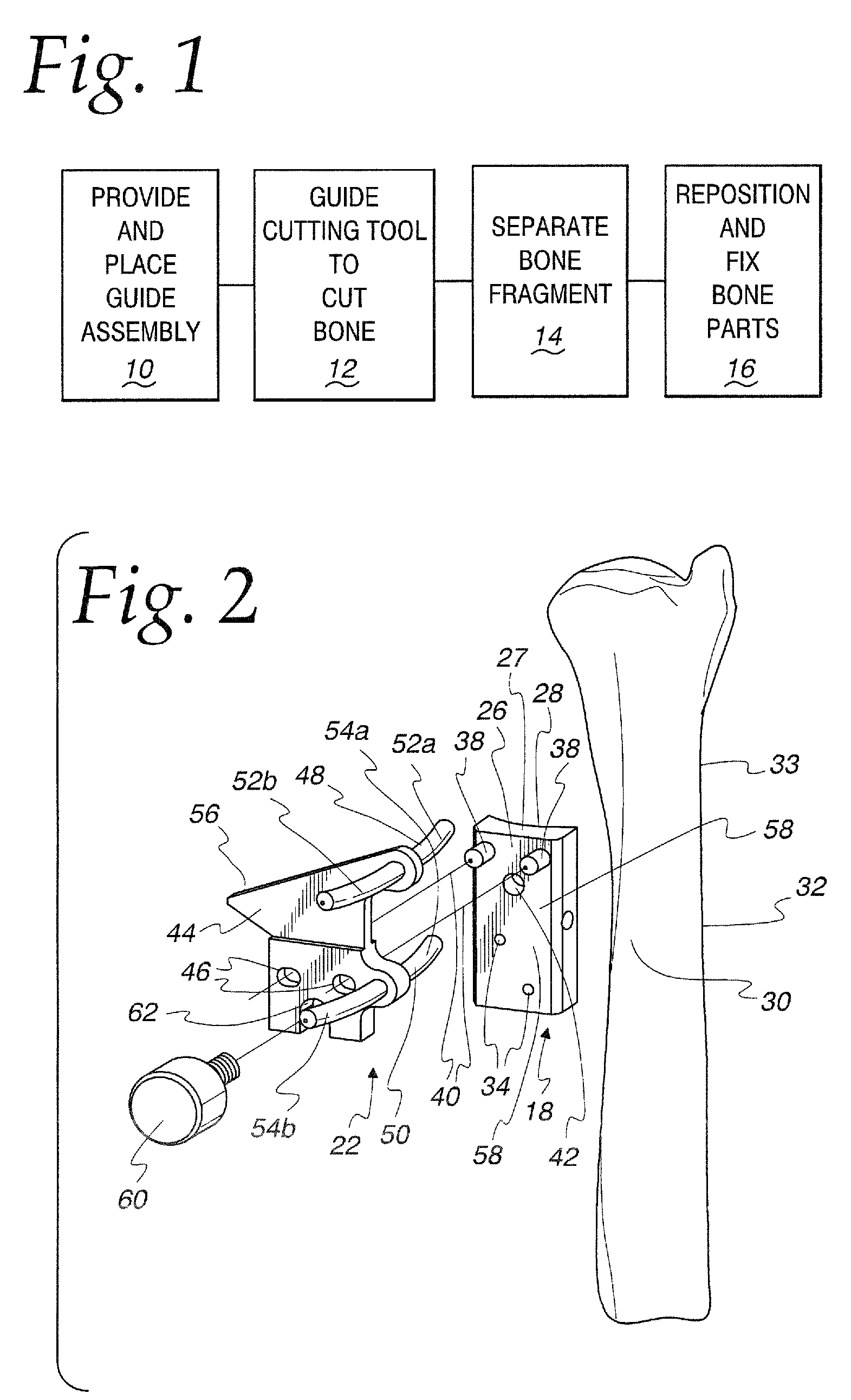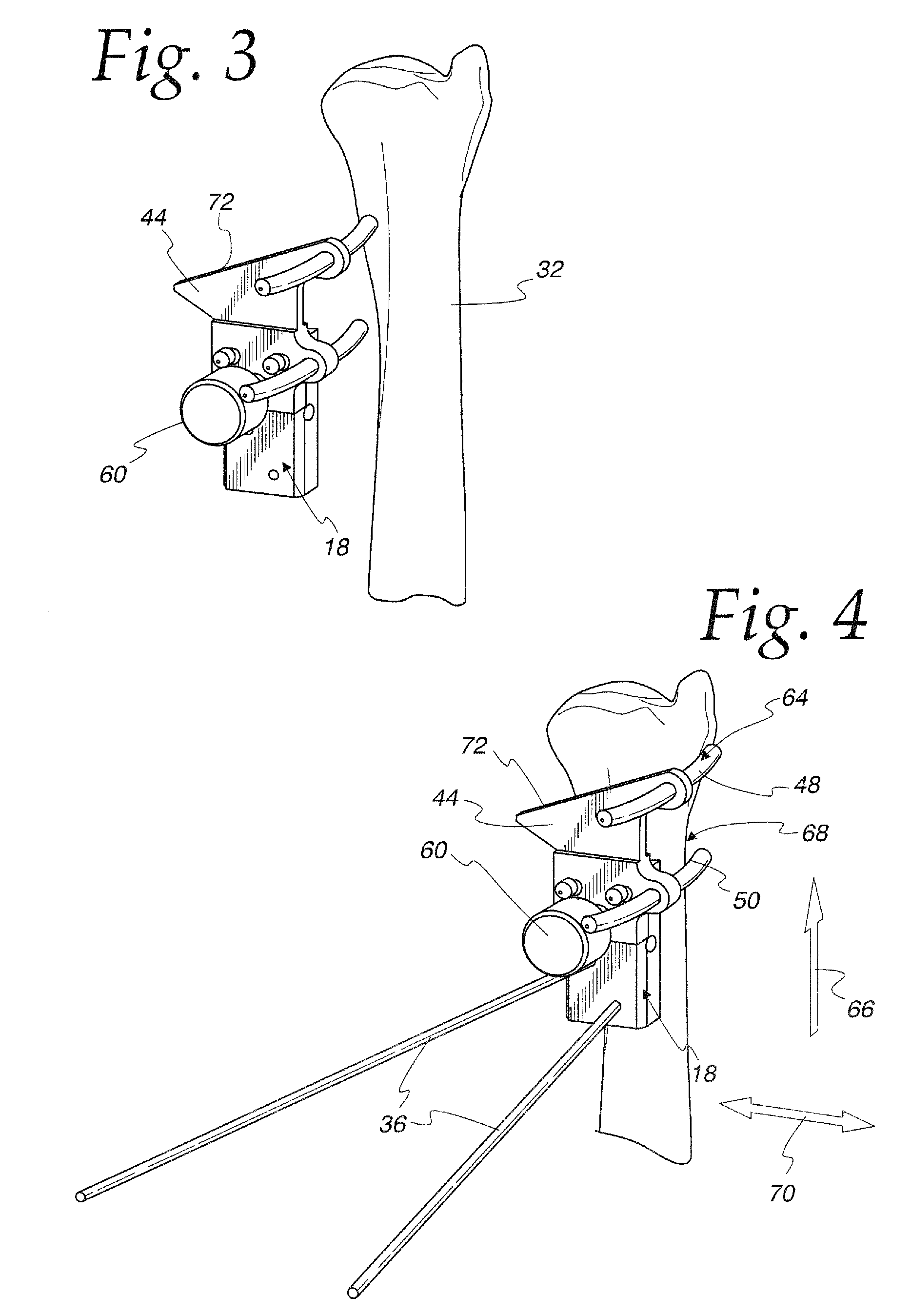Method of performing osteotomy
a technology of osteotomy and bone grafting, applied in the field of osteotomy, can solve the problems of compromising the ultimate effectiveness of the procedure, affecting reducing the safety of the patient, so as to facilitate separation and removal
- Summary
- Abstract
- Description
- Claims
- Application Information
AI Technical Summary
Benefits of technology
Problems solved by technology
Method used
Image
Examples
Embodiment Construction
[0049]In FIG. 1, a flow diagram representation of a method of performing an osteotomy, according to the present invention, is shown. According to the invention, a guide assembly is provided and placed in operative relationship to a bone to be cut, such as an ulnar bone, as shown at block 10 in FIG. 1. The guide assembly defines first and second guide edges that are in fixed relationship to each other to guide movement of a cutting tool.
[0050]As shown at block 12, the cutting tool is guided along each of the first and second guide edges to cut the bone so as to produce first and second cut lines in the bone to facilitate separation and removal of a wedge-shaped fragment of the bone from between first and second bone surfaces formed at the separate cut lines.
[0051]As shown at block 14, the bone fragment defined by using the cutting tool is separated and removed so that a gap of a first width is formed between the first and second bone surfaces.
[0052]Separate bone parts, upon which the...
PUM
 Login to View More
Login to View More Abstract
Description
Claims
Application Information
 Login to View More
Login to View More - R&D
- Intellectual Property
- Life Sciences
- Materials
- Tech Scout
- Unparalleled Data Quality
- Higher Quality Content
- 60% Fewer Hallucinations
Browse by: Latest US Patents, China's latest patents, Technical Efficacy Thesaurus, Application Domain, Technology Topic, Popular Technical Reports.
© 2025 PatSnap. All rights reserved.Legal|Privacy policy|Modern Slavery Act Transparency Statement|Sitemap|About US| Contact US: help@patsnap.com



